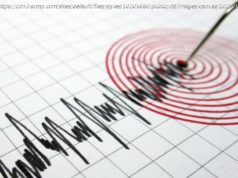The dancing bot, designed by researchers at Tohoku University in Japan, adjusts its teaching based on the user’s number of previous practice sessions and performance history.
Researchers have developed a waltzing robot that can teach people how to dance.
In contrast to previous dancing robot, this one can take the lead, allowing the robot to teach dance sequences.
While the system has been developed for dancing, it could also have other applications including physical rehabilitation and sports training.
According to the researchers, experiments with multiple volunteers showed safe interaction guided by the robot and improvement in the volunteers’ dancing abilities
The system adjusts its difficulty mode based on the user’s number of previous practices and performance history.
The bot, which stands 1.8 meters tall (5 feet 9 inches) , was designed by researchers at Tohoku University in Japan.
According to the authors of the study, the bot its designed for contact with adults with heights ranging from 1.5 meters (4 feet 9 inches) to 1.9 meters (6 feet two inches) meters tall.
It has a force sensor and two laser rangefinders to track movements, which are compared against motion-capture data originally recorded from professional dancers.
It has an interactive face that provides the partner with feedback to help them identify their mistakes, show their progress and give encouragement.
The robot embraces the human with the right arm and contacts the human by the left hand and at the hip level, creating the dance closed position.
The robot’s guidance force isn’ t too strong to maintain comfort for the partner, also make it easier for them to adapt to the to the interaction with the robot.
For a partner that has improved, the dance teaching robot reduced the force of its guiding motions, allowing the partner to move more freely by him or herself.
And if the human partner abruptly stops, the robot maintains contact within a limit of force – and when the partner starts moving again, the robot continues to guide.
To test the relationship between the student and the bot, researchers recruited 12 volunteers who were all novices in the Waltz dance.
The volunteers first observed an experienced dancer performing the steps.
Since the robot lacks feet, an example of a human performing the feet motions was preferable.
Then, the volunteers observed the robot performing the dance figures alone to help them understand the robots motion in relation to the steps.
They then interacted with the robot for the first time, adapting to the bots height and arms position.
The volunteers were then asked to stop moving while practicing to test the force of the robot, allowing them to gain more trust in the robot as they became aware that the robots motions depend on their response.
They practiced with the robot in a session lasting 20 to 30 minutes long, and then filled out a questionnaire to evaluate their perception of the session.
In such tests with people who had never waltzed before, five out of six people showed an improvement.
However, in a set of studies where the robot wasn’t programmed to adapt to students, four out of six volunteers showed no improvement.
Dr Diego Felipe Paez Granados, a human-computer interaction researcher at Tohoku University and the lead author of the research, told New Scientist that the bots could have applications outside of simply dancing, such as in sports training or physical rehabilitation.
‘There are special skills and sports where the trainers are not always so open to everyone, ‘ said Dr Paez Granados.
‘If you have this system that is good enough to teach you as well as a professional, then it could have a huge market.’
Another researcher, Dr Etienne Burdet, a professor of human robotics at Imperial College London, said that understanding free-form physical interactions between humans and machines could be important for applications such as handover controls between humans and driverless cars.






